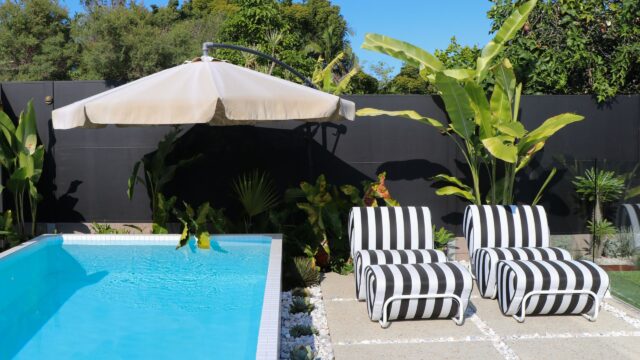When choosing the best type of fencing materials for your home, there are many considerations to make. Of course, your budget will play a key factor in your decision, but the look and feel you are trying to achieve should also be at the top of your list. Your fence will no doubt have varied purposes like creating privacy or a boundary line, for example. However, the style of your fence is equally important. Whether you want to create wow factor or simply complement the overall style of your home. Either way, you don’t want your fence to look like an afterthought or like you ran out of budget. So, to help you make an informed decision, we’ve put together a few different fencing materials along with the architectural styles they suit most.
Key considerations before choosing your fencing materials
- What is the purpose of your fence or wall – privacy, dividing fence, front entrance
- Are there additional items you may require? – lighting, letterbox, gates
- How long is the fence, and does it need an integrated retaining wall?
- Are you looking for a professionally installed fence or a Do It Yourself (DIY) option?
- If you’re after DIY, do you have all the equipment needed for the installation? (consider any additional equipment required, fence and freight costs and the time it will take you to install the fence compared to professional installation and weigh up your options)
ModularWalls fencing materials
ModularWalls are a versatile and modern fencing system that suits any home style, thanks to its timeless aesthetic. Being modular means they are more cost-effective than rendered masonry walls and are much faster to install. ModularWalls are a post and rail system with modular panels that slide into the posts. The lightweight fencing materials mean you can even install the fence yourself as a DIY project. While ModularWalls are more expensive than a standard treated pine paling fence (per square metre). ModularWalls won’t rot or warp like timber fences, resulting in less maintenance and upkeep, and they will last much longer. (10-year warranty). Plus, the panels offer acoustic benefits compared to timber or metal fencing. The beauty about ModularWalls is the freedom to finish your fence in a style of your choosing, whether that’s ultra-modern or more traditional or a combination of finishes and fencing materials.
Architectural and design styles that suit ModularWalls fencing:
- Art Deco
- Australian farmstead
- Coastal
- Contemporary
- Federation
- Hamptons
- Modern
- Palm Springs
- Victorian


Metal fencing materials
Alternatively, metal fencing such as standard metal, wrought iron, slats or laser cut panels make great fencing options and suit various styles.
Metal fencing
Metal fences are a popular choice in Australia for their relatively low costs and ease of installation. While metal fences are great for privacy, they offer few acoustic benefits. Additionally, metal fencing won’t rot, but it’s important to keep your metal fence clear of any soil to maintain it. (If you have a dog that likes to dig, a standalone metal fence may not be an option). One of the downsides to metal fencing is it will get scorching hot in Summer and can reflect heat. Reflected heat is not ideal, especially if you have a garden next to your fence or an entertaining area. That said, either used on its own or in combination with different fencing materials, it can be a cost-effective solution that suits various house styles.


Wrought iron
Another metal fencing option to consider if you’re after a more traditional look for your home is wrought iron. Typically, wrought iron is available in a wide variety of vertical railings or more intricate panel designs. A benefit of wrought iron is you can use it in combination with brick walls or ModularWalls to create a formal style. However, suppose your home is in a coastal location. In that case, the wrought iron may be prone to rust and, therefore, will require regular maintenance. Lastly, if privacy isn’t a key consideration, wrought iron will give an open outlook and will undoubtedly add curb appeal.
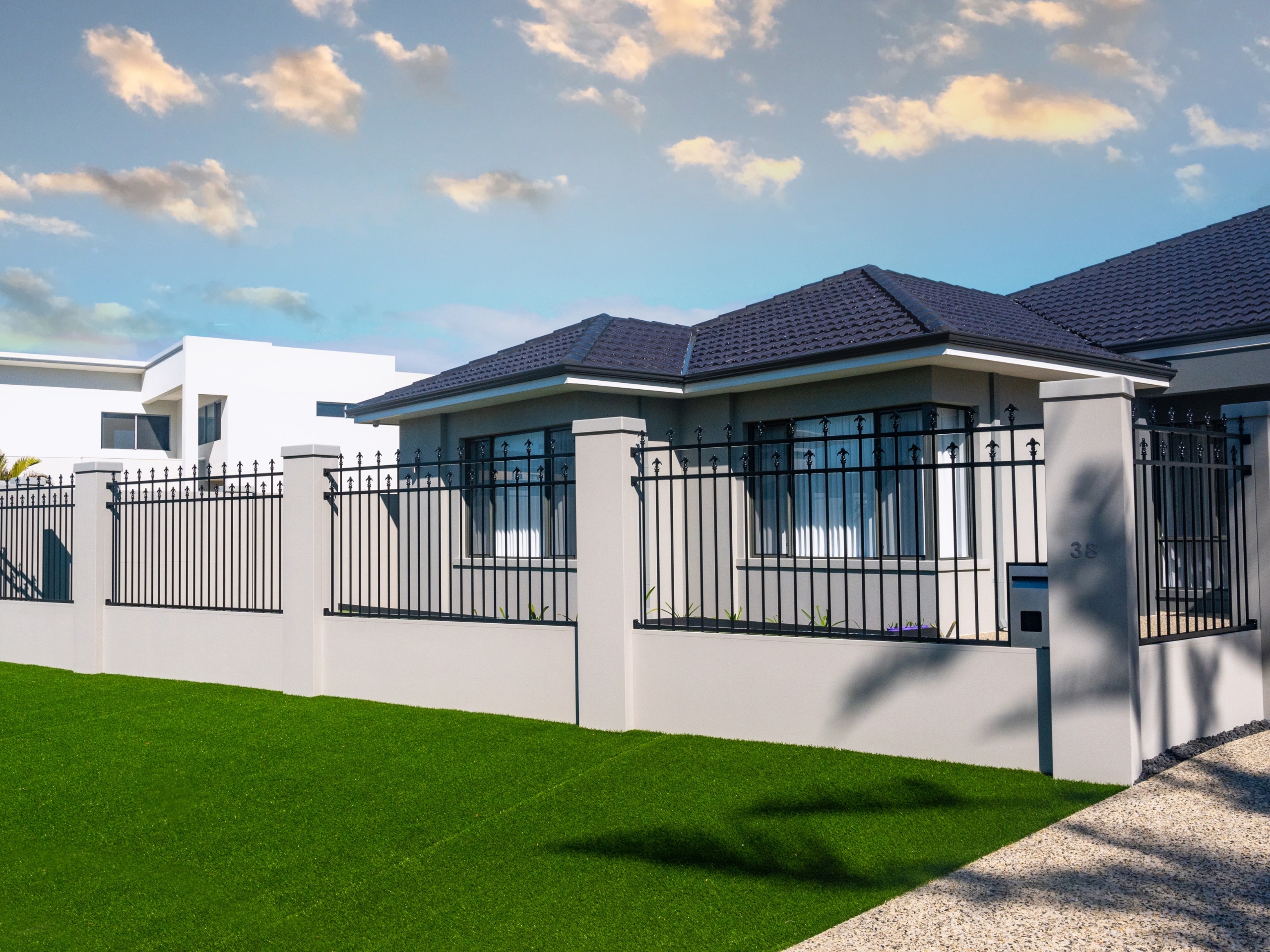

Slats
In any residential street in Australia, you will undoubtedly see a slat fence. They also look great in combination with ModularWalls or brick fencing materials. Using slats offers a way to break up a continuous fence with either the same fence colour or contrasting colours. Plus, slats provide moderate privacy while still allowing filtered light and airflow. Slat fences are great for coastal or contemporary modern style homes. However, if you’re after complete privacy or noise reducing qualities, slats may not be the best choice.


Laser-cut panels
The options are endless when it comes to laser cut panels. Usually made to measure, this is a premium option. However, laser-cut panel fences will give you wow factor and make your home stand out on your street. Typically, laser-cut panels can be used as standalone fences with metal, brick or timber posts or in combination with other fencing materials. As mentioned above, if you’re looking for a privacy fence with acoustic benefits, laser-cut panels may be better suited as a feature panel attached to your fence.
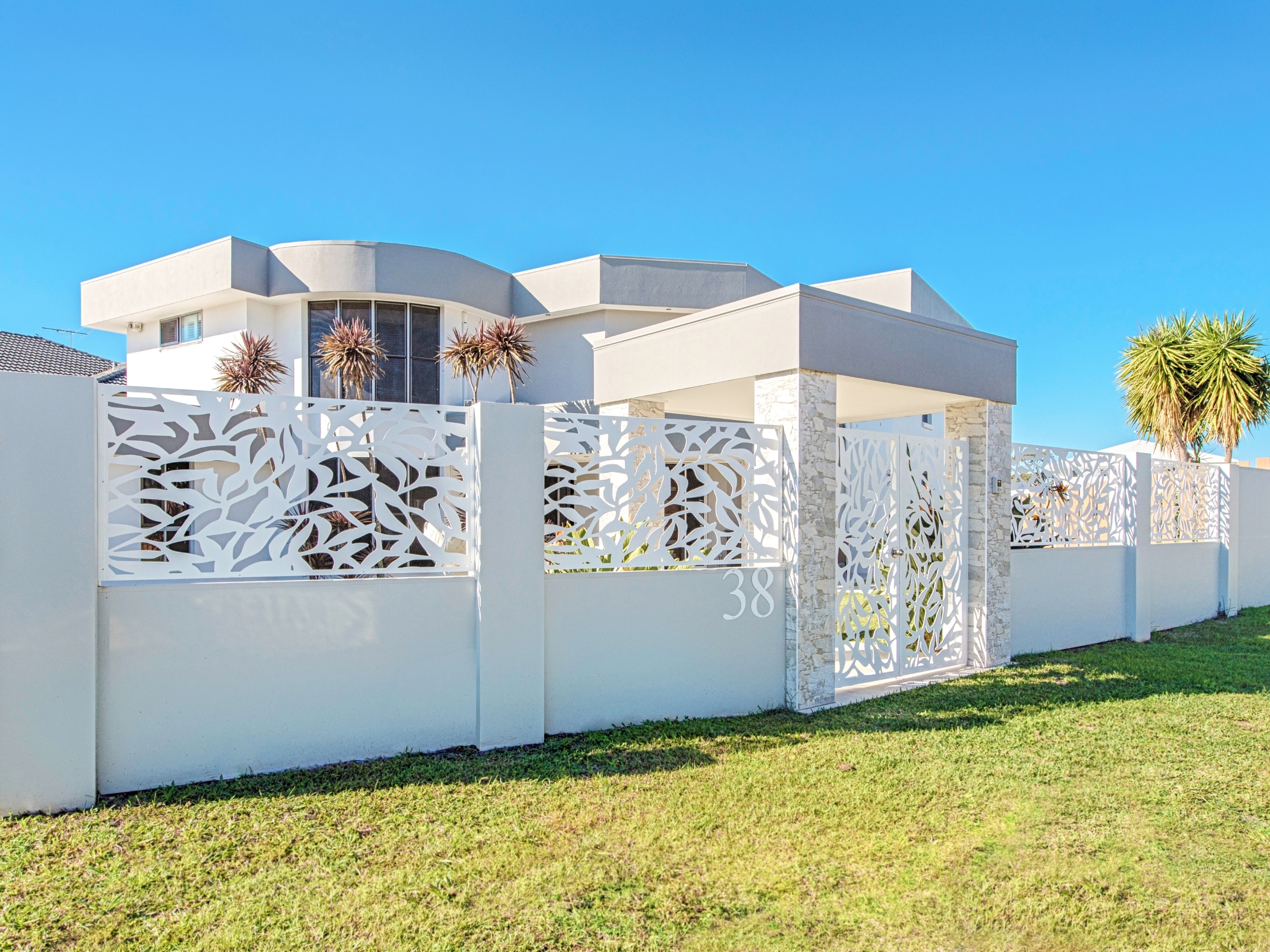

Architectural and design styles that suit metal fencing:
- Art Deco – wrought iron, laser cut panels
- Australian farmstead – metal fences
- Coastal – metal fences, laser cut panels and slats
- Contemporary – metal fences, laser cut panels and slats
- Federation – wrought iron
- Industrial – metal fences, laser panels and wrought iron
- Modern – metal fences, laser cut panels and slats
- Victorian – wrought iron
Timber fencing materials
Timber fencing, especially treated pine timber fencing, has been the go-to for residential backyard fences for many years, thanks to its low cost. However, a timber fence is prone to rot and warping, and if there are gaps between the palings, your fence won’t offer any noise reduction between yards. Undoubtedly timber fencing has come a long way and is now used in a multitude of ways. A great example is the hardwood battens incorporated in the VogueWall front fence at The Designory’s Bryon Bay Villa. Timber fences suit a wide range of architectural styles. From white picket fences for cottages and Hamptons inspired homes to hardwood battens for modern and coastal homes, not to mention the classic Australian farm fence. As a recyclable fencing material with the ability to paint any colour, it’s a great option as a standalone fencing material or integrated with another materials.
Here are a few types of timber fences to consider:
- Hardwood
- Treated pine
- Cypress Pine (An Australian pine that’s forested responsibly and has insect and has natural repellent properties to decay and insects)
- Pressure-Treated Wood
Architectural and design styles that suit timber fencing:
- Australian farmstead
- California bungalow
- Coastal
- Contemporary
- Cottage (e.g. lattice or picket fences)
- Federation
- Hamptons
- Modern
- Queenslander
- Traditional (picket fences)
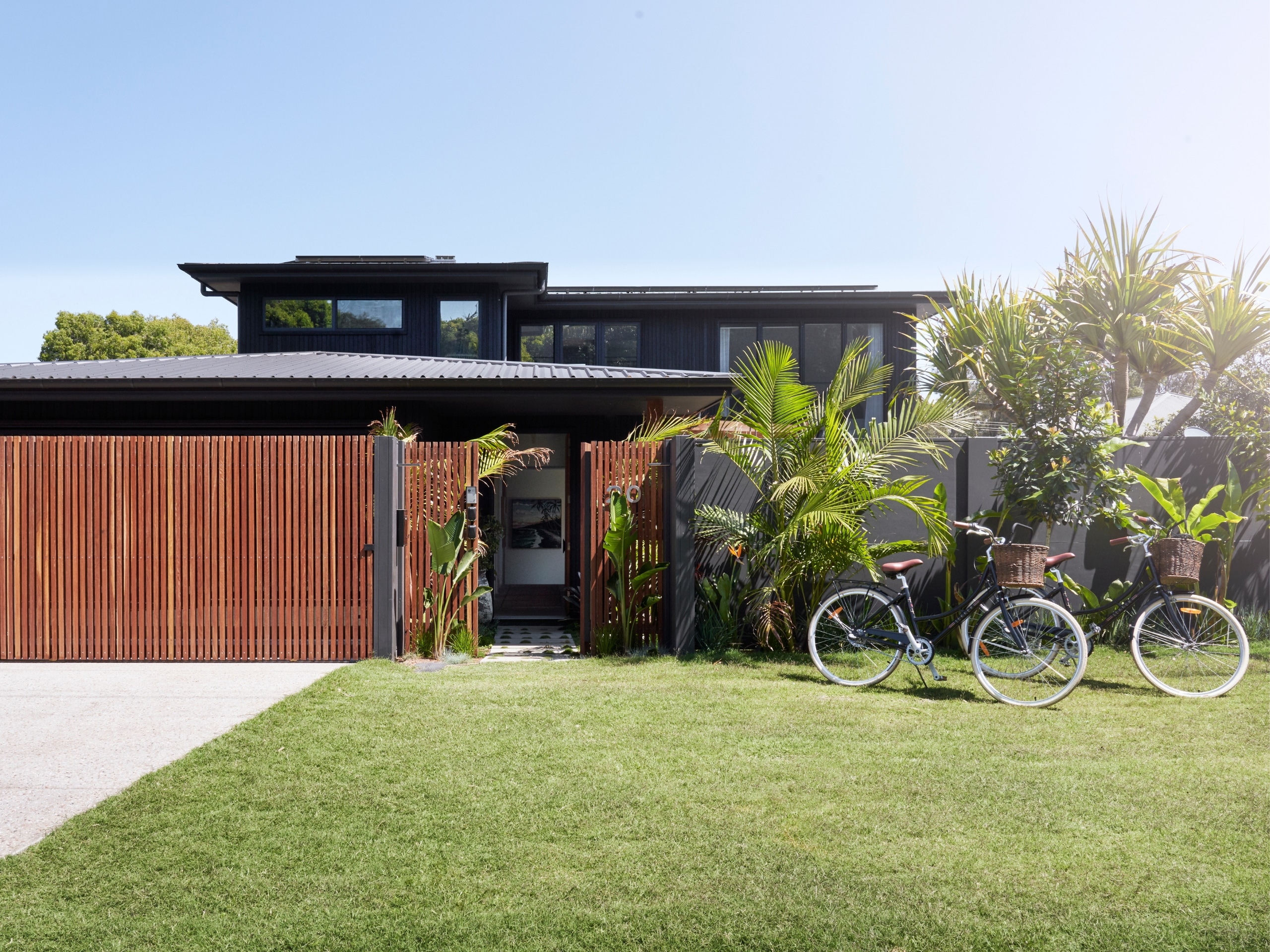

The Designory – Byron Bay Villa
Masonry fencing materials
Brick and stone walls can look fantastic and will give a grand stately look. However, these options are expensive. To ensure a brick or stone wall is secure, they require labour intensive footings making them a premium option. Over time the mortar joints may also need patching. It’s common to see brick fences integrated with another fencing material such as slats, iron, or wood as a way to reduce costs. Additionally, to cut down costs for stone fences, they are often integrated with ModularWalls, brick posts, wood, or slats. However, if you’re considering either of these options, is a grand entrance or fence using brick or stone going to suit the overall style of your home?
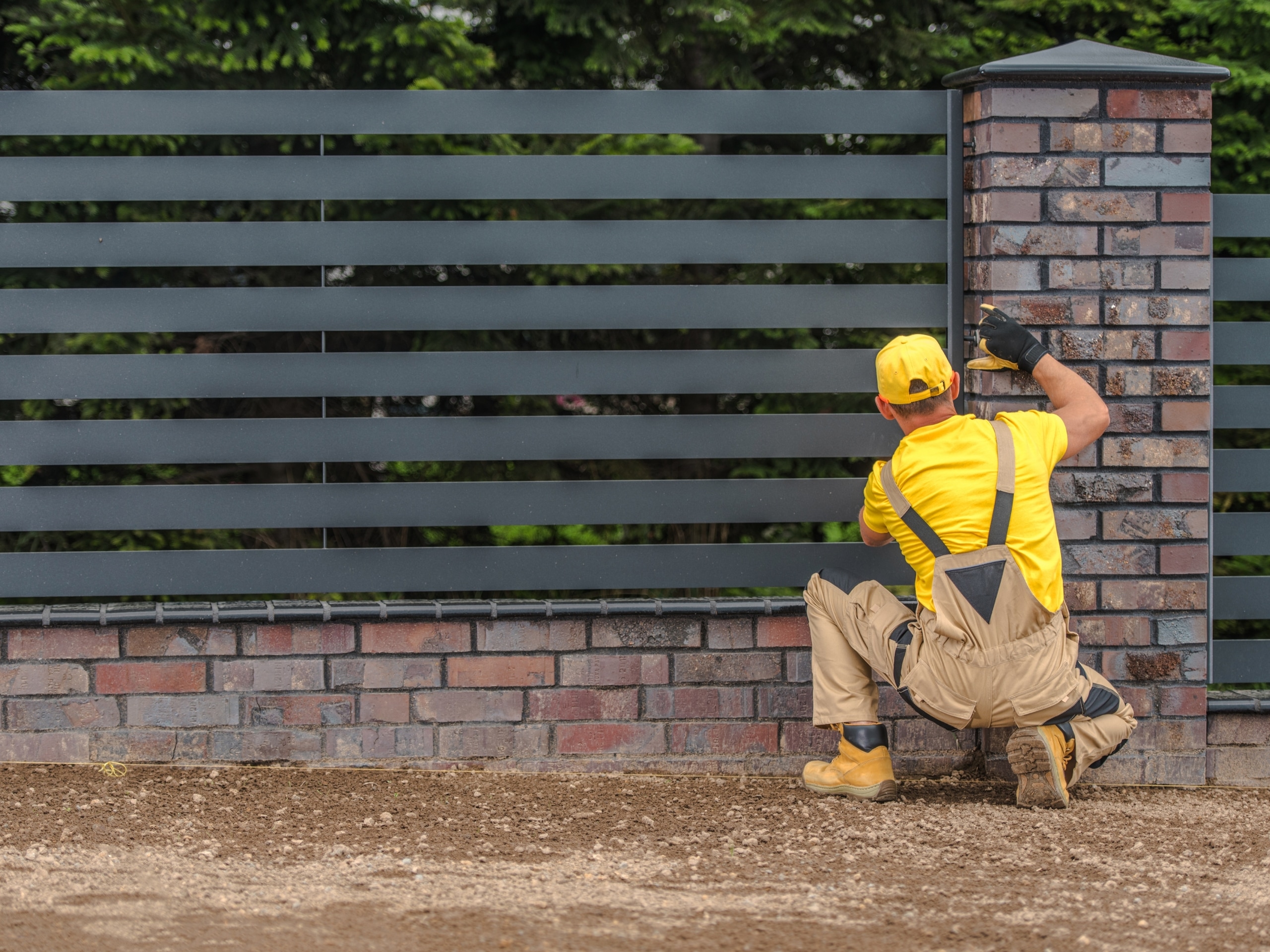

Architectural and design styles that suit masonry fencing:
- Art Deco
- Australian farmstead
- Victorian
PVC fencing
PVC (stands for polyvinyl chloride) is a more premium option compared to timber or metal fencing. However, they are typically maintenance-free and usually have an extended warranty (check with suppliers as warranties vary). PVC fences are generally white, but some companies are offering a range of colours. Suppose you live in a hot or windy climate; a PVC fence may not be a great option. PVC can be prone to expanding and retracting in extreme temperatures and therefore could crack over time. PVC fences are most suited to traditional style and Hampton’s inspired homes. Think white picket fences or, in some instances, solid panels with decorative battens at the top.
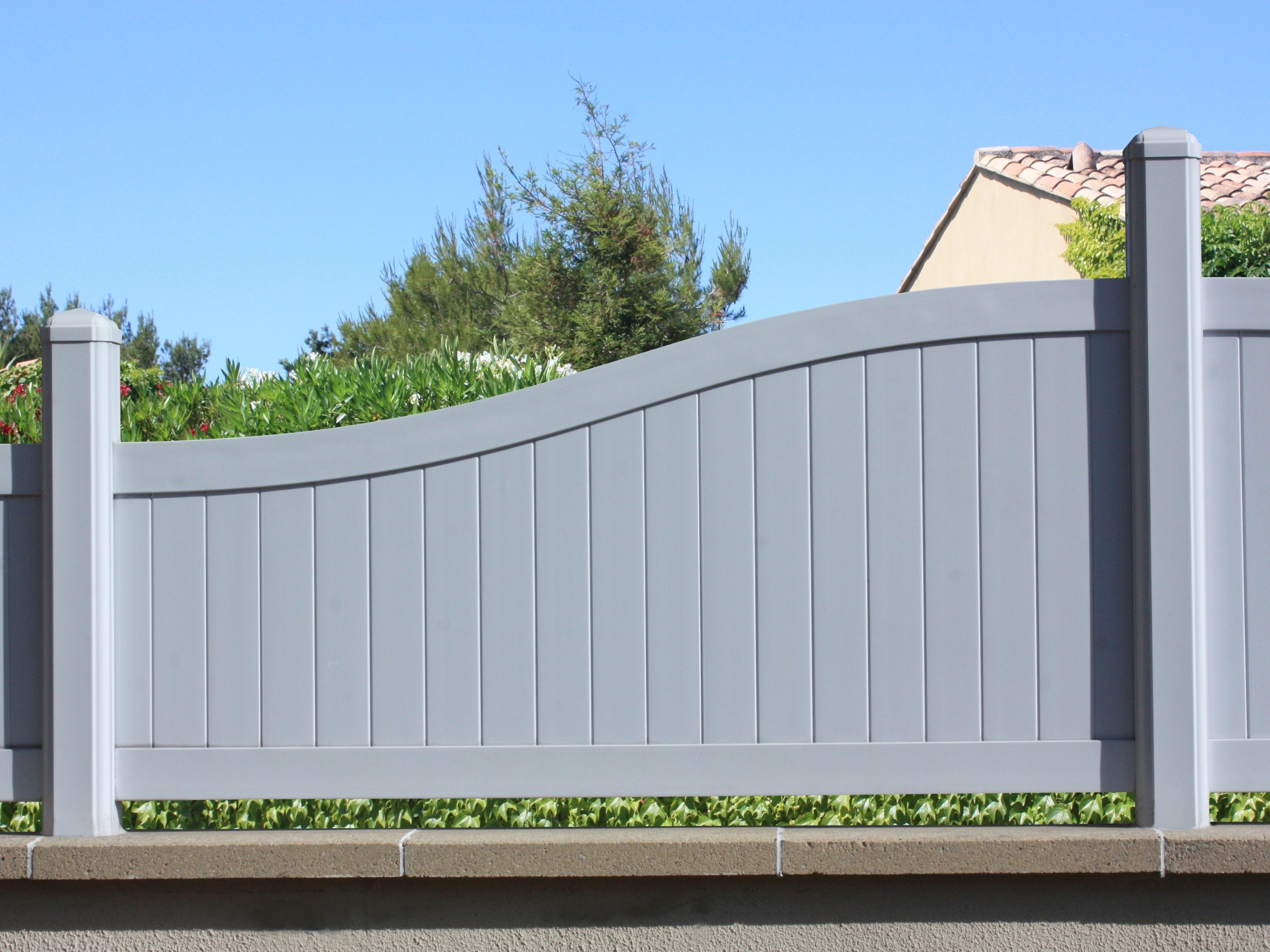

Architectural and design styles that suit PVC or vinyl fencing:
- California bungalow
- Cottage
- Hamptons
- Queenslander
- Traditional
Overall, choose fencing materials that will suit your home’s architectural style and stand the test of time. Selecting a quality fence will save costs in the long run and can even add value to your property.


